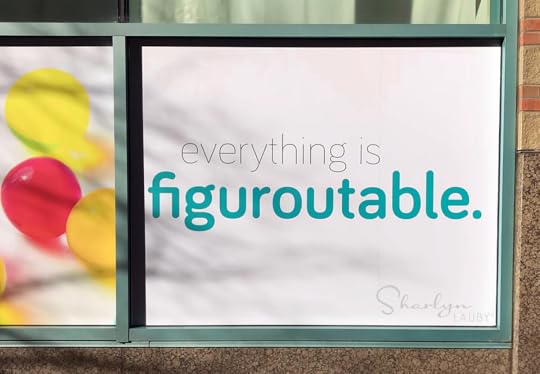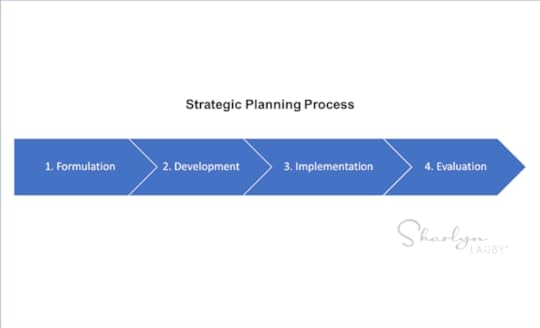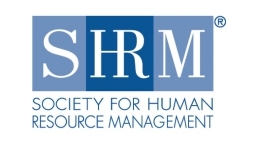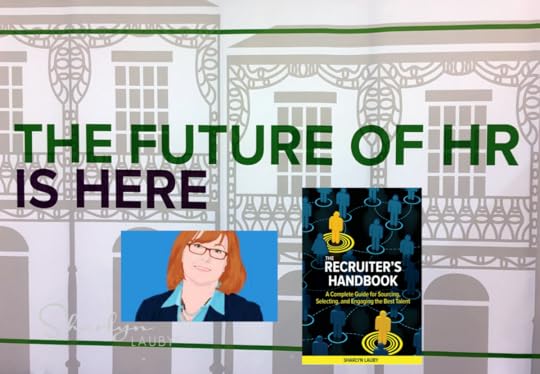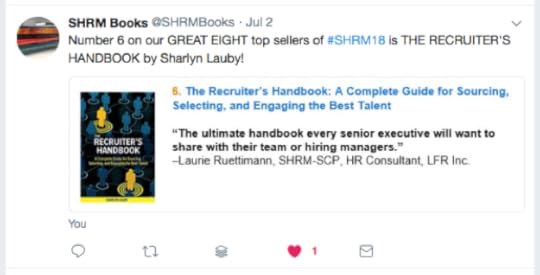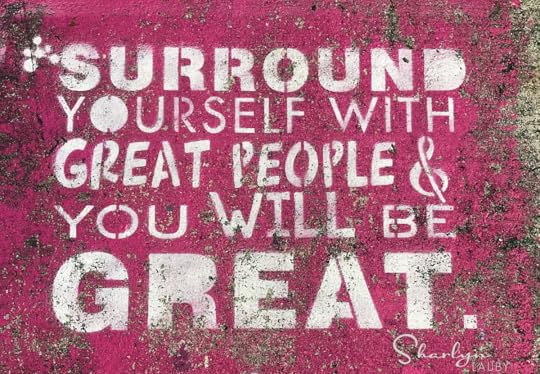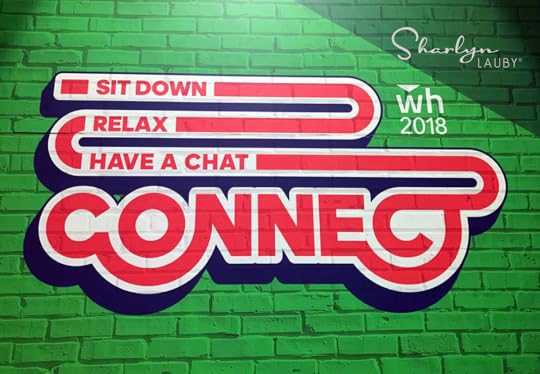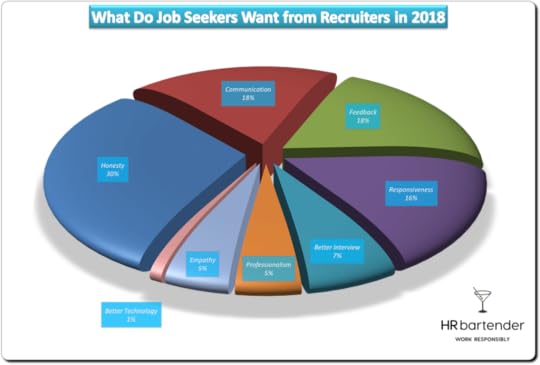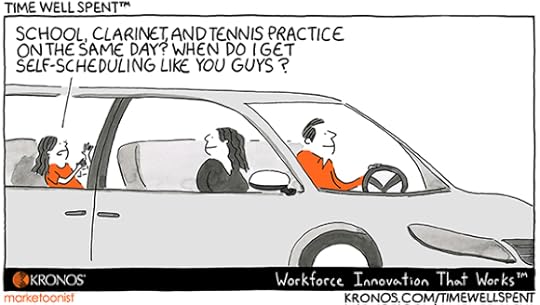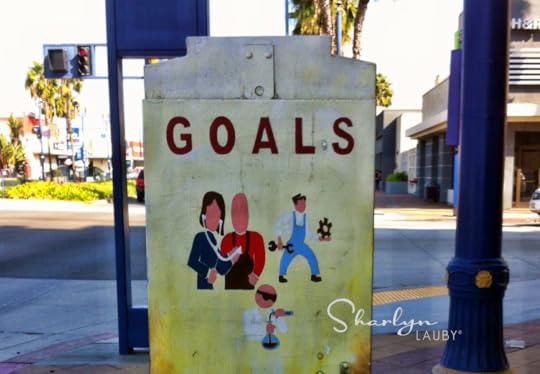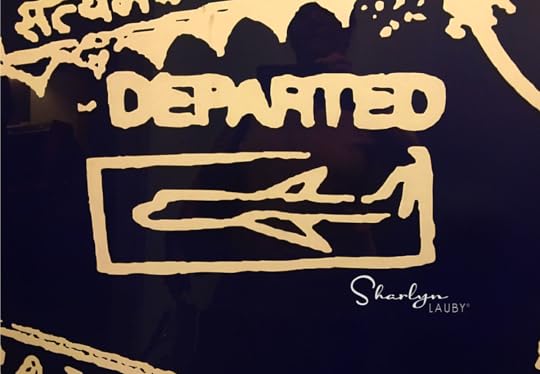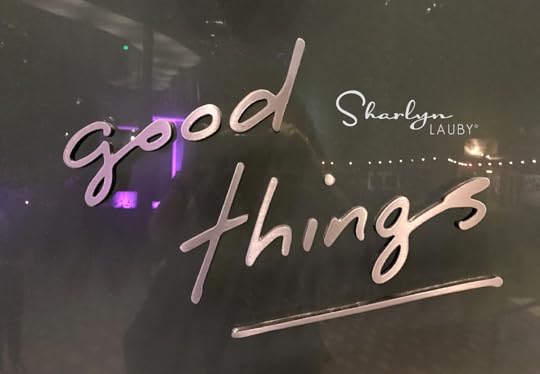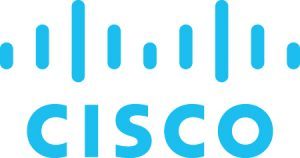Sharlyn J. Lauby's Blog, page 115
July 10, 2018
Use Strategic Planning Techniques to Build Your Workforce Plan
With unemployment rates at historic lows, organizations have to not only think about filling open requisitions, they also have to develop a long-term approach to staffing. Frankly, if an organization waits until they have an opening before they start strategizing their sources, it will be too late. The recruiting team will always be taking a reactionary approach to staffing.
Workforce planning is about developing a proactive approach to talent acquisition.
I had the opportunity to participate in the Society for Human Resource Management (SHRM) seminar “Workforce Planning: The Future of Work”. I was really interested in taking this seminar because I think that workforce planning is going to be a key activity for organizations faced with recruiting challenges. I believe it’s also going to be absolutely necessary to shift recruiting efforts from reactive to proactive.
But before I talk a little about the workforce plan seminar content, I want to share with you a little personal takeaway that I learned while participating in this online seminar. I signed up for this seminar and blocked the time off on my calendar. I knew that my schedule was busy, but I figured it wouldn’t be a problem. Well, darn it all if life and work didn’t get in the way. Ha.Ha. Mr. Bartender and I moved from South Florida to North Florida. And then I had to shift a couple of project timelines. I’m sure you guys can relate.
The reason I’m bringing this up is because it would have been so easy to just blow off the whole seminar. You know how it goes. You miss a couple of sessions and you figure that you can’t possibly catch up. So just let it go.
Well, I didn’t just let it go. I listened to the entire workforce plan class after the fact. And while I don’t recommend that approach – there’s an advantage to participation – I don’t feel that I missed out on key content. Seriously! I was able to see the instructor, the chat stream, etc. just like I was there.
So, for those of you who are looking at your calendar and saying, “I can’t possibly sign up for this seminar because I’m going to miss a couple of sessions.” I’m here to tell you…sign up anyway! You will not miss out on major pieces of content. Let’s face it, if you’re looking for a perfect moment to attend training, it just might not happen.
Now, back to the conversation about workforce planning.
It was very interesting how the facilitator, Dr. Ed Sherbert, aligned the process of workforce planning to other processes we’re very familiar with. First, he talked about how the marketing department uses data to create a customer profile. That customer profile includes information like buying habits, disposable income, etc. Then, using the customer profile, the marketing and sales departments create a plan to attract (and retain) customers. The sales and marketing plan is rolled up into the company’s strategic plan.
A strategic plan involves four steps. Let’s do a quick recap:
Formulation. During this step, the organization establishes its goals and objectives. They do this through the process of gathering data, often referred to as an environmental scan. Remember, the outcome of a strategic planning exercise is to answer the following questions:
How does the organization compete?
How does the organization create value?
How does the organization allocate resources?
How does the organization make decisions?
Development. Once the strategy has been established, now the actual steps and activities are planned out. These steps are established based on the data from the environmental scan.
This is also where the workforce planning activity takes place. So, in addition to the discussion about the organization and operations, this step includes developing the talent strategy part of the strategic plan. And it answers the questions above as it relates to talent. How will the organization compete for talent? How will the organization add customer value with their talent? How will the organization allocate resources to get the best talent? And finally, how will the organization make decisions regarding talent?
Implementation. Of course, this is the step when organizations turn planning into action. I don’t want to minimize this. The implementation phase is very, very difficult. It’s hard work.
Evaluation. When it comes to strategic planning, I like to think of evaluation as a 2-step process. Evaluate the plan itself to make sure the assumptions and data used in the formulation step are still valid and relevant. Then evaluate that everyone who should weigh-in and buy-into the plan are given the ability to confirm their support. This is true for the workforce plan as well.
One of the reasons I like this approach to workforce planning is because it uses a process that we’re already familiar with. Of course, the seminar goes into a lot more detail, but you can see how workforce planning aligns with business strategy.
HR has the opportunity to help the organization achieve its business goals by developing and executing a relevant workforce plan. If you want to learn more about how to build a workforce plan for your organization, check out the SHRM seminar schedule for this program and others about talent acquisition.
Image captured by Sharlyn Lauby while exploring the streets of Boston, MA
The post Use Strategic Planning Techniques to Build Your Workforce Plan appeared first on hr bartender.






July 8, 2018
Bookmark This! #SHRM18 Conference Edition
A couple of weeks ago, the Society for Human Resource Management (SHRM) held its annual conference in Chicago. Over 22,000 human resources professionals were in attendance. It was an exciting and extremely educational event.
It was also impossible to take in everything that the event has to offer. It’s just huge! So, I wanted to share just a few of the things I found along the way.
I’ve mentioned before that certified professionals can earn recertification credits by reading books. Well, SHRM announced during the conference a new list of books that are eligible for recertification credit. And I’m excited to share that both of my recent titles, “Manager Onboarding: 5 Steps for Setting New Leaders Up for Success” and “The Recruiter’s Handbook: A Complete Guide for Sourcing, Selecting, and Engaging the Best Talent”, are now eligible for recertification credits.
Speaking of things certification-related, SHRM also recently announced a new specialty credential for talent acquisition professionals. Look for more information about this new offering in future articles.
Another topic of conversation was government. Compliance has always been a big part of our HR roles, but the legislative landscape is changing rapidly. I know that there are moments we simply want to tune out all of the politics, but HR professionals need to find reliable sources to stay on top of what’s happening at a federal, state, and local level. And with legislation like GDPR, we even need to think on a global scale. If you’re not a member of the SHRM A-Team, consider checking it out. SHRM Government Affairs keeps us current and shares some ideas for pending legislation – like this bill on Workflex – that can be a win for employers and employees.
I’m not sure if this has always been a feature at SHRM conferences, but SHRM had an area dedicated to their Knowledge Center. As a SHRM member, you can contact the Knowledge Center for information at no additional charge. Ask them a question, they will research an answer, and send it to you via email. In the past, I’ve used the Knowledge Center for topics like inclement weather policies and meal/rest breaks.
Finally, one of the biggest reasons that I love attending the SHRM annual conference is networking. I can catch up with old friends like John Jorgensen and Steve Browne. And I can spend time getting to know new bloggers. If you don’t subscribe to The SHRM Blog, check it out. It’s a great place to find new voices in the human resources space. For example, I particularly liked this post from Mary Faulkner on “Style or Substance”.
As HR pros, our professional development is important. We spend a lot of time justifying resources for employees to get the training and development they need. Don’t forget about yourself. Mark your calendars now for #SHRM19 in Las Vegas on June 23-26, 2019. Look forward to seeing you there!
Oh, and P.S. I hope you don’t mind a little humblebrag, but the SHRM Store recently announced their top-selling books from the conference and “The Recruiter’s Handbook” was on the list! Thank you to everyone who has purchased a copy. I very much appreciate it. Also a big congrats to friends Steve Browne and Tim Sackett for making the list as well.
The post Bookmark This! #SHRM18 Conference Edition appeared first on hr bartender.






July 5, 2018
Improve Performance by Expanding Solutions
After an employee is coached about their performance, a follow-up meeting should always be scheduled. Always. Even if the employee turns their performance around a full 180 degrees. Actually, let me rephrase that. Especially if an employee turns their performance around.
Why? Because having a follow-up meeting allows you to find out what they did to correct the situation. That generates a proven strategy for success that could be used in the future. Correcting a performance issue is tough. IMHO, the key to improving performance is having an awareness of proven solutions. Think of them like a treasure map. When faced with a challenge, we can pull out the right map and use it to help us get to the right place.
The question becomes, what are those right solutions (i.e. maps) that can help us. In many cases, they’re right in front of us. Here are eight that came to mind:
Blogs. I certainly hope that readers find HR Bartender a source of ideas and practical solutions. That being said, there are lots of other blogs that can be useful and very helpful. Harvard Business Review has an outstanding blog. I also love their Management Tip of the Day email. The blogs “Ask a Manager” and “Evil HR Lady” focus on answering reader questions, which can provide some terrific insights.
Books. If you enjoy reading, look to books for models, theories, and stories about how to solve problems. One of the great things about books is they’re often the source of case studies. Right there, you get proven solutions about how an organization was faced with a problem, developed a program, and measured results. Friend and fellow blogger Laurie Ruettimann hosts an HR Book Club that can provide some creative inspiration in terms of takeaways.
Podcasts. I understand books aren’t for everyone. If books aren’t your thing, consider podcasts. Speaker and business advisor Jennifer McClure has launched a podcast series called “Impact Makers”, where she interviews people who are making a positive difference in the world. Looking for new ideas and solutions? I guarantee that you’ll get more than enough while listening to these people’s stories.
Conferences. I honestly believe there’s a conference for every person and budget these days. From the very large Society for Human Resource Management (SHRM) Annual Conferenceand Association for Talent Development (ATD) International Conference to the HR Technology Conference and Expo and the WorkHuman Conference Pioneered by Globoforce. These events give participants an immersive experience focused on education and information.
Expositions. Speaking of conferences, I cannot say enough about the professionals who work the expo hall at conferences. They are some of the smartest people around when it comes to designing solutions for individuals and organizations. Next time you’re at a conference, take a moment to chat with them. It’s okay to grab the swag too…but have a conversation as well.
Seminars. A common complaint that I hear about conferences is that the information doesn’t go deep enough. In those situations, opt for a workshop or seminar instead of a conference. Many are available in both an in-person and virtual format to fit with your schedule. SHRM and ATD both offer programs on a variety of topics. Also, don’t forget to check out the programs that your local HR associations provide.
Meetings. Speaking of local chapter meetings, building networks with fellow professionals can help tremendously when it comes time to problem solve. I’ve always felt in HR that we can’t always talk to anyone about our challenges. Either the person wouldn’t understand, or they would be a bit judgy. Having an HR network allows us to discuss matters with colleagues in a safe environment. And hopefully get some really good suggestions!
Social Media. Last but certainly not least, remember that social media can be a conduit to learning solutions. Whether it happens through an article posted on Facebook, a video on YouTube, or participating in a LinkedIn group (LinkedIn HR is the largest and most active one around). And there’s also Twitter chats like the one hosted by SHRM every Wednesday at 3p Eastern.
It doesn’t matter if you use books, conferences, meetings, or social media. What matters is that we’re constantly looking for solutions. So, when we need them, we have them handy. Because that’s how we solve problems and improve performance.
Image captured by Sharlyn Lauby while exploring the Wynwood District in Miami, FL
The post Improve Performance by Expanding Solutions appeared first on hr bartender.






July 1, 2018
Use a Growth Mindset to Reduce Bias
I ran across a very interesting article from Harvard Business Review titled,” Neurodiversity as a Competitive Advantage”. It talked about a growing number of organizations such as SAP, Microsoft, Hewlett-Packard, Towers Watson, and EY who are reforming their HR practices to capitalize on the talents of people with neurological conditions such as autism and dyslexia. According to the article, unemployment for individuals in this group can run as high as 80 percent.
It reminded me of a presentation at BetterWorks Goals Summit. Joelle Emerson from Paradigm discussed fostering a growth mindset culture to reduce bias. Her point was, organizations need to focus on helping employees understand the advantages of diversity rather than guilting people into adopting a diversity strategy. And the way to do it is with a growth mindset.
Emerson recommended the book “Mindset: The New Psychology of Success” by Carol Dweck as a resource for learning more about the concept. Dweck writes that we can have a fixed or growth mindset. A fixed mindset is one where individuals believe that “you are who you are” and you can’t really develop in a particular area. Conversely, a growth mindset is when you can be anything you want because you feel that you can develop yourself. Think of it as nature versus nurture.
When it comes to organizations, a growth mindset is one where the organization is willing to take on more risk, set more goals, and be willing to accept failure. Organizations can foster a growth mindset to reduce bias and stereotypes. A few weeks ago, I ran a post from David Rock’s sessionat last year’s Society for Human Resource Management (SHRM) Annual Conference about bias. He mentioned that teams can deal with bias by focusing on processes. Emerson said the same and offered a few specifics on how to do it.
Avoid fixed mindset language. For example, using phrases like a candidate needs to have “selling in their DNA” promotes a fixed mindset because it implies that people can’t learn or develop sales ability.
Focus feedback on the process not the person. This means defining the process criteria in advance. Don’t reverse engineer into it. This will allow teams to apply criteria consistently, using the same criteria each time. Create a process checklist if necessary.
Gather and use good data. Compare performance to the standard, not to other biases.
Talk openly about mistakes and failures. I’ve mentioned before about how much I enjoyed hearing Sara Blakely, founder of Spanx, talk about failure. Consider having a favorite mistake of the week in meetings. The online publication Slate publishes a post titled “our mistakes of the week”.
Raise awareness. When organizations talk about mindset, diversity, and inclusion, they’re not talking about THE strategy. They’re talking about a part of the overall business strategy.
My takeaway from these pieces was that organizations need to view talent from a unique perspective instead of trying to implement a one-size-fits-all approach. This places a huge responsibility on HR to design work that can be completed by a diverse group of individuals, each with diverse talents.
It also means that managers need to be trained to manage and coach a diverse group of people. Managers cannot expect employees to conform to their leadership style. Sure, that’s the easy way. But easy doesn’t get the organization the best talent.
The post Use a Growth Mindset to Reduce Bias appeared first on hr bartender.






June 28, 2018
Build a Social Recruiting Army to Amplify Your Employment Brand
A few weeks ago, I wrote about the PESO Model and how it can help frame your recruitment marketing strategy. Today, I wanted to add something to that conversation because there’s one aspect of the model that I can see being underutilized and it’s shared media.
Shared media takes place when others share the messaging that you’re sending out. And obviously, we want people to do that. To be specific, we want our employees to do that. Hopefully, our workforces are engaged and want to see us hire great talent to work alongside them. And hopefully, our workforces have diverse networks with followers who will complement our company culture (and ultimately apply for jobs!)
Joey V. Price spoke about building a social army at this year’s Society for Human Resource Management (SHRM) Talent Conference. That’s exactly what I think of when I refer to shared media. It’s about having the company’s branding messaging amplified and distributed far beyond our initial reach.
When social media was a relatively new concept, many organizations talked about building brand ambassadors – both internal and external – to amplify their messaging. Most of the conversation was on the consumer brand side of the business. But why not for recruiting talent? We need to take advantage of every marketing opportunity.
How to Build a Social Army for Recruiting
Building a social army does mean putting a plan together and not simply hoping that people will just share stuff. Back in the old days, we called that kind of strategy “post and pray”. Post a job opening and pray people find it. Today we can do a lot better. Here are a few things to consider:
Think about your social media goals. I’ve heard quite a few recruiting pros lately talk about social media as just another posting platform. And I’m not sure that’s true. Social media has the ability to regularly touch people about the organization’s brand. It deserves some serious thought.
Provide employees with social media training. It’s unfortunate to say that data breaches are a fact of life. We need to be well-educated on terms of service, privacy settings, and permissions when it comes to social media. These are perfect lunch and learn topics. It’s a win for everyone.
Set expectations. By now, your organization probably has a social media policy that’s been approved by the legal department. Make sure employees understand expectations and, if the company is going to encourage social sharing, that it’s a part of your policy.
Recognize employees who share. Whether it’s Twitter or Facebook or LinkedIn, we have the ability to thank people who share our status updates. If you want employees to share, thank them for doing so! That will encourage them to do it again.
Speaking of employee communications, I know some of you might be saying to yourself, “I would love to do this, but it sounds like a huge time commitment. I just don’t have the time. Too many open requisitions!” Well, what if I told you there’s a technology solution out there that could help?
Advocacy Software Helps Manage Social Groups
In my last article, I told you about HRmarketer’s marketing software. They have a new offering that really plays into the social army strategy. It’s called Advocacy.
I had a chance to use the Advocacy software as part of the blogger team for SHRM’s Annual Conference and Expo in Chicago. SHRM used the software to keep bloggers informed of press releases around the conference and blog posts related to speakers, events, etc.
One of the great things about using the software was that this information wasn’t junking up my email inbox. Everything was in one place and I could go in once or twice a day to make sure I had the most current information.
Apply this to your recruiting efforts. The company’s social recruiting army – recruiters, hiring managers, and employees – can have regular access to information that they can share with their connections, friends, and followers. As talent acquisition pros, you only have to send the information out once to them and they can receive and share it at their convenience.
I’m not going to tell you everything that the Advocacy software is capable of doing, you can check it out for yourself by requesting a demo. But if the reason keeping you from building a social recruiting army is the time it would take to communicate with others, this is an option.
What Got You Here Won’t Take You to the Next Level
Companies looking to find the best talent can’t do it alone. They need the efforts and networks of hiring managers, and employees. Developing a plan to increase the amount of shared media makes huge sense in today’s digital world. And the best part is that shared media is a very cost-effective way to get your messaging out.
Image captured by Sharlyn Lauby while exploring the Wynwood Art District in Miami, FL
The post Build a Social Recruiting Army to Amplify Your Employment Brand appeared first on hr bartender.






June 24, 2018
Recruiters: 8 Things Job Seekers Want from You [poll results]
Just in case you missed it, a few months ago, I wrote an article about the things that recruiters want from job seekers. I received a comment saying that it would be interesting to look at the flip side: What do job seekers want from recruiters?
Great question! So, a few weeks ago, I set up a survey for you to tell me your thoughts. I received almost 100 responses. While we can’t declare it statistically scientific, I’m saying it’s significant. (It’s my blog so I can do that kind of stuff. ha.ha.) But your comments were no joking matter.
It took me some time to read through the responses and categorize them. I put them into eight categories from least mentioned to most mentioned:
Technology: This wasn’t as much about organizations having expensive technology solutions as it was about getting the basics right. Like “if a recruiter is making their first contact via phone, they should make sure their phone number displays a business name versus ‘No Caller ID’ or ‘Unknown Caller’.” Many people just don’t answer those calls.
Professionalism: I’m putting in this category the references to bias, ageism, and disrespect. One respondent said, “If I took a day off (which may have been a complicated maneuver) and a bunch of travel time to come and speak with you, do me the courtesy of feeding me a decent meal, thanking me for my time, and filling me in on the results.”
Empathy: We spend a lot of time talking about the importance of the candidate experience because a poor one can impact the bottom-line. Recruiters need to remember what it was like to be a candidate. One respondent said, “Treat the job seeker as you would like to be treated.” ‘nuf said.
Interviews: A few people mentioned the lack of dialogue during interviews (question → answer, question → answer) as well as the quality of questions (“Tell me about yourself.” is getting a little old.) They also mentioned recruiters and hiring managers being prepared by reviewing the resume or application prior to meeting with the candidate.
Responsiveness: This ties into other areas like empathy and feedback. One person said, “If the job seeker is supposed to follow up in 24-48 hours, how about the recruiter does the same?” I continuously hear from recruiters that the best candidates are off the market in ten days. If that’s true, then responsiveness matters.
Feedback: This is consistently one of candidates’ top peeves. If the position gets filled, let candidates know. One respondent said, “When I get a phone screen or interview, prompt notification that I’m not in the running is nice.” Today’s recruiting technology solutions allow you to do this so take advantage of it.
Communication: This is probably no surprise. But job seekers said they expected recruiters to have clear verbal and written communication skills. They also said that they expected recruiters to be able to “translate experience into their open roles.”
Honesty: Respondents mentioned honesty both in terms of the company and the job. One person said that they wanted to know “the good, the bad, and the ugly. I’m a professional and know there’s both good and bad about any job and any organization.”
So those are the things that job seekers want to see from recruiters and here’s how the comments were distributed:
As you can see, the top four areas were honesty, communication, feedback, and responsiveness. If organizations are trying to improve their candidate experience, those areas might offer a starting point. Conduct a little self-audit. How would you rate yourself in these areas? Are there actions you can put in place to improve? It’s possible that the company could positively impact their candidate experience without spending any money – through transparent and authentic communication, feedback, and responsiveness.
Image captured by Sharlyn Lauby while attending the WorkHuman Conference in Austin, TX
The post Recruiters: 8 Things Job Seekers Want from You [poll results] appeared first on hr bartender.






June 22, 2018
Managing Your Schedule Is a Skill – Friday Distraction
Editor’s Note: Today’s post is brought to you by our friends at Kronos, a leading provider of workforce management and human capital management cloud solutions. For a third year, in information technology by Glassdoor.com. Many congrats to him! Enjoy the article.)
Regular readers of this blog know that I’m a planner. That also means I’m a scheduler. I find that the way I get things done is by blocking off time on my calendar. I do understand this might not be for everyone. But it works for me.
Which is why I couldn’t help but laugh at this Time Well Spent from our friends at Kronos. It reminded me that my way of getting things done is something I’ve learned over time. Maybe I didn’t learn it in elementary school, but you get the point. It takes time to figure out the best way to manage all of the meetings, appointments, etc.
Here are a few things to consider when it comes to managing time:
Use a system that works for you. The goal of scheduling is to provide reminders – either about places you need to be (like a work meeting) or stuff you need to do (like an expense report). As long as your system works – meaning you show up where you need to be and get things done on time – then it’s a good system. The problem occurs when people adopt scheduling systems and don’t use them.
Understand priorities. There are things on my calendar that are moveable and others that aren’t. I also try when I’m project planning to give myself plenty of wiggle room in case I have to make schedule adjustments. It doesn’t always work, but I really work hard to schedule my priorities. Of course, this also means that I need to have a clear understanding of what my priorities are.
Schedule “me” time. This is easier said than done. For example, one of my personal goals is to schedule a block of time to catch up after business trips. And the good news is I’m getting much better at it. But as part of our personal well-being, we need to carve out time on our calendars just to do something we want to do. It could be a MOOC, a massage, or the movies. And we have to learn how to not feel guilty about it.
Whether your scheduling system is a paper journal or a technology system, it needs to do the job it was intended to do. While I’ve been talking about scheduling on an individual level, the same applies to workplace scheduling.
Organizations need to use scheduling systems that work for them. The systems need to support the company’s priorities. And they need to be flexible enough to create a win for everyone.
The post Managing Your Schedule Is a Skill – Friday Distraction appeared first on hr bartender.






June 19, 2018
3 Strategies for Achieving Your Career Goals
(Editor’s Note: Today’s post is brought to you by our friends at Capella University. Capella is an accredited online university dedicated to providing an exceptional, professionally-aligned education that puts you in a position to succeed in your field. They offer bachelor’s, master’s, and doctoral degrees as well as certificate programs for human resources and business professionals. Enjoy the post!)
I hope that everyone saw the May jobs report issued by the U.S. Department of Labor. Specifically, the part that talked about unemployment being at 3.8 percent. We haven’t seen these numbers for close to two decades.
While it’s great to have people employed, it can be tempting to think that, if we’re looking for a new opportunity right now, we don’t need to work very hard. It’s true – organizations are challenged to find the best talent. But individuals still need to have focused career strategies.
Strategy #1: Work / Life Balance Includes Career Goals
To me, work/life balance is the concept of having both a personal and a professional life that I have control over. I don’t know that it means an equal 50/50 split of time. But it means I can have both.
The second part of the definition is equally important – control. This doesn’t mean that we will never stay late or work on a weekend. Maybe that’s exactly what we want to do in order to get that project done in peace and quiet. Again, it’s about having control. If I work on Saturday to clear a few projects off my desk, then I can go see Deadpool 2 on Thursday afternoon.
If you share this definition of work/life balance, then you also realize that it’s not a Millennial thing. Or a Gen X thing. Or a Boomer thing. Every employee wants it. Because every employee wants control over their personal and professional lives. Granted, the reasons might be different, but I’m not sure the reasons matter. Because whatever those reasons are . . . they’re personally important to the employee.
But work/life balance doesn’t just extend to personal stuff like going to your kid’s soccer games or taking care of sick family members. It also has to do with career development. Having work/life balance can mean being able to attend conferences, classes, or obtain a certification that will improve our knowledge and skills. And spending time on learning and education doesn’t have an age limit.
Strategy #2: Invest in Your Own Career
Taking the time and dedicating the resources for career development can be hard. We might not always have the time or the money to make things happen the way we would like. Remember that quote from best-selling author Nora Roberts, “If you don’t ask, the answer is always no.”? Well, there are some things we can ask for.
Books. There are books on the market for just about everything. Books are especially good if you’re trying to learn a process. For example, let’s say you want to learn more about human resources metrics. Ask your boss for a copy of “How to Measure Human Resource Management” by Jac Fitz-enz. The book is reasonably priced, allows you to learn at your own pace, and you can keep it on your bookshelf for future reference.
Experiences. In many organizations, work experiences allow employees to learn new skills, grow professionally, and get exposure to individuals they wouldn’t typically meet. It could be a task force, implementation team, or a committee. Sometimes these opportunities are disguised as boring assignments that no one wants. Don’t be afraid to volunteer and give it your all to gain valuable experience.
Stretch Goals. Speaking of work experiences, sometimes stepping outside our comfort zone can be great for our career. It could involve a new work experience, like I mentioned above. Or it could be taking a class online in a subject that’s always fascinated you. Or maybe speaking at a conference about a program you’ve implemented. Whatever it is, don’t let the task intimidate you. The return on your time investment could be very valuable.
Strategy #3: Develop a Board of Career Advisors
Many of us have mentors who can offer advice and counsel. They can provide tips to be productive and encouragement to stay focused. But not all mentors are the same. And, in some situations, it makes sense to choose your mentors for the task at hand.
For example, let’s say you’re thinking about going back to school to get your master’s degree. Maybe your goal is to apply for a scholarship first. Think about the mentors who will help you get there. And remember, there’s no rule that says you have to limit yourself to one mentor. So, find multiple mentors (aka your own board of career advisors) who can provide value toward all of the goals you’re trying to accomplish.
At this point, don’t think about long-term formal mentoring programs. Instead, see if you can identify individuals who have attended graduate school. Maybe look for people who have worked and earned their degree at the same time.
I’d like to think that everyone knows how important it is to be a lifelong learner and to continuously make investments in their career development. But all learning opportunities don’t look the same. By regularly carving out time for development, asking for stretch opportunities, and building mentoring relationships, you can build the career success you hope to achieve.
P.S. Every dollar helps when it comes to getting an education. I know several people who want to pursue graduate degrees, but the cost is prohibitive. Scholarships allow individuals access to learning they might not otherwise have. If you’re at the Society for Human Resource Management (SHRM) Annual Conference and Expo in Chicago this week, our friends at Capella University have a special opportunity that will help with your work/life balance goals. It’s a $2,000 scholarship toward a Master of Science in Human Resource Management program. Stop by their booth for more information.
P.P.S. Capella also offers additional business scholarships for their bachelor’s, MBA, and doctoral programs. You may be eligible to receive:
Up to $8,000 for BS in Business
Up to $2,500 for MBA
Up to $7,000 for DBA and $8,000 for PhD in Business Management
Image captured by Sharlyn Lauby on the streets of Long Beach, CA
The post 3 Strategies for Achieving Your Career Goals appeared first on hr bartender.






June 18, 2018
Asking Employees for Reimbursement After They’ve Departed – Ask #HR Bartender
Today’s reader note is about a company that’s doing something really nice for employees and ends up with a huge dilemma on their hands.
Our company takes all employees (along with their family, significant other, friend, etc.) to Disney for the weekend. We cover hotel, park tickets, meals, a company meeting, and airfare. While this is not a mandatory event, we hope all employees will attend. (Last year almost 80 percent of all employees joined us). The employee buys their own airfare and we reimburse them. All other expenses are paid directly by the company.
Situation: An employee has resigned right before the trip and therefore, will not be going. But they’ve already been reimbursed for airfare purchased.
Since the tickets cannot be transferred to the company, still have value to the employee (less any change fee), we feel it is appropriate to recapture the reimbursed airfare from the employee. They voluntarily decided to leave the company and have an asset.Are we within our rights? Thanks.
Unfortunately, we don’t know from the reader note if there are any policies or procedures in place that might address this issue. But I do think this raises some questions about offboarding. To help us understand the nuances of this situation, I reached out to our friend Andrea W.S. Paris, a California-based attorney focused on resolving business disputes. She’s helped us previously on a post about the differences between where employees live and work.
I’m delighted that Andrea has agreed to share her knowledge with us. Please remember that her comments should not be construed as legal advice or as pertaining to any specific factual situations. If you have detailed questions, they should be addressed directly with your friendly neighborhood labor attorney.
On the surface, what the company does for employees is pretty awesome. There is one aspect that I wanted to address – the company meeting. If employees are asked to participate in a company meeting during this trip, do they need to be paid for their time? Why or why not?
[Paris] The rule of thumb is whenever employees’ time is used for the company’s benefit, it is considered work, even when it’s not mandatory. The answer to the question as to whether they need to be paid for the meeting time depends on whether we’re talking about exempt or non-exempt employees.
Exempt employees are paid their salary regardless of the number of hours worked. Therefore, it is not necessary to pay wages in addition to their regular salary for the time spent in the company meeting.
However, non-exemptemployees should be paid for the time spent in the meeting. This issue should be addressed in the company’s employee handbook.
In this scenario, the employee resigned before the company outing. Does it matter if the employee voluntarily resigned or if they had been terminated for cause?
[Paris] The situation is analogous to the requirement to return company property. Employees are expected to return, and the company has a right to seek the return of company property regardless of who ends the employment relationship.
In this case, the company is asking about the plane ticket reimbursement. But if an employee has been reimbursed for anything (i.e. conference registration, tuition, etc.) wouldn’t it be the same situation?
[Paris] Yes.
If the company decides to ask the employee for a reimbursement, is there a time limit on when they should take action?
[Paris] I suggest requesting the reimbursement (minus estimated fees to employees) immediately upon receipt of the employee’s notice of termination. The longer the company waits, the less likely it is to recover the funds.
And if the company decides to contact the former employee for reimbursement, is there a best way to do it? Meaning, should you just pick up the phone and ask them OR have the company’s legal counsel draft a letter?
[Paris] If the employee left on cordial terms, a phone call could be effective because this kind of request is more difficult to ignore in-person or on the phone. However, the company would still want to follow up with a letter in order to have a paper trail in the event that further follow-up is necessary. If the relationship is strained, a letter from counsel may be more effective.
Last question: Is there something that the company can do to not end up in the same situation again?
[Paris] Since the company appears to have the infrastructure to book and pay for all other aspects of the trip, having control of the flight arrangements could prevent this issue in the future. Perhaps establish a relationship with a corporate travel agent who could coordinate employee’s flights so that any credit resulting from flight cancellations would be credited directly to the company.
A huge thanks to Andrea for sharing her experience with us. Be sure to follow her on Twitter at @AndreaParisLaw and check out her blog.
Rules, policies, and procedures can be a real bummer at times. Especially when the rule is completely unnecessary. But there are times when rules serve a valuable purpose. They allow us to handle situations consistently.
Image captured by Sharlyn Lauby after speaking at the Learning and Development League Annual Conference in Delhi, India
The post Asking Employees for Reimbursement After They’ve Departed – Ask #HR Bartender appeared first on hr bartender.






June 17, 2018
Organizations: It’s Time for Family Friendly Leave Programs
Happy Father’s Day to everyone celebrating!
While Mr. Bartender and I don’t have children, we respect parents and the responsibility they have to raise their children into adults. It’s tough and rewarding. But from my vantage point, parenting has evolved over the years. And organizations need to bring their leave policies into modern times. One company that’s doing just that is Cisco.
If you’re not familiar with Cisco, they are a worldwide technology leader focused on making the internet work. They’ve been in business since 1984 and most of us know them for their routers. But you might immediately recognize another of their product brands, Webex.
Cisco noticed that fathers were reluctant to use paternity leave benefits due to lingering stereotypes or unspoken pressure they may feel they face in the workforce. So last fall, Cisco implemented a gender-neutral benefits program for new parents to give both fathers – and mothers – adequate time to care for a new baby. Program highlights include:
Redefining family: Cisco eliminated the terms “maternity” and “paternity” from their policies and programs, replacing this language with “main caregiver” and “supporting caregiver” in the spirit of inclusivity.
Increasing support for new parents to 13 weeks: For employees who are welcoming a new child into their family, including parenthood via surrogacy, adoption, fertility treatments, etc., Cisco increased their time off from 4 weeks to 13 consecutive weeks of leave. This allows more time to bond and care for children, in addition to unlimited time off for all appointments.
Expanding emergency time off: Cisco is supporting people in the face of an emergency, such as a death in the family, a loved one’s illness, or a natural disaster, by expanding available time off in addition to their existing paid time off (PTO).
To find out more about Cisco’s new benefits, I spoke with Ted Kezios, senior director of global benefits at Cisco. He is responsible for the global benefits strategy and design of Cisco’s health, welfare, and retirement plans covering over 70,000 employees in 100 countries.
Ted, how did Cisco realize that they needed to address their leave policies?
 [Kezios] Our senior leadership launched a bold initiative two years ago to make a meaningful difference in the moments that matter most to employees. We know that the best talent comes from an inclusive environment and culture where we celebrate diverse backgrounds and families.
[Kezios] Our senior leadership launched a bold initiative two years ago to make a meaningful difference in the moments that matter most to employees. We know that the best talent comes from an inclusive environment and culture where we celebrate diverse backgrounds and families.
Launching a new parental leave policy, globally, to establish minimum time away regardless of caregiver role, was one way we chose to celebrate and support our families. That’s why Cisco offers employees welcoming a new child into their family the opportunity to take time away, based on their caregiver role rather than their biological relationship. Enhancing the moments that matter is all part of “Our People Deal” — the culture we create together, every day.
(Editor’s Note: To learn more about Cisco’s People Deal, visit their careers site: https://www.cisco.com/c/en/us/about/careers/we-are-cisco/people-deal.html)
What process did the company use to develop new programs?
[Kezios] As part of our company-wide “Moments that Matter” initiative, cross-functional, global teams were created to accelerate the pace of change. All changes took into consideration “Our People Deal” — the culture we create together, every day. We listened to our employees through surveys and focus groups, and we got feedback from managers. We also did benchmarking, not merely to match what others are doing, but to be a leader in this space.
How did HR sell the change to senior management? And to your employees?
[Kezios] We didn’t have to sell this change to senior management because we already had their commitment through the support of “Moments that Matter”. These changes were very much driven from the top down.
During the implementation phase, did anything surprise you?
[Kezios] We knew from the start that implementing a change of this magnitude would be complex, and it has been. Within each country there is a significant amount of coordination to ensure integration with statutory leave requirements. Communicating the changes to employees has been the fun part and has been well received.
How is HR measuring the impact of this change?
[Kezios] We will measure the participation and employee sentiment of the new leaves. We look forward to seeing an uptick on employees taking advantage of the new flexibility these leaves afford. Success of these new leaves will not be exclusively tied to participation, because doing the right thing is part of who we are as a company.
A huge thanks to Ted for sharing some insights about Cisco and their new benefits program. Like Ted mentioned, it’s always good to hear what others are doing and then decide how to create a program that aligns with your culture.
The way we live and work is changing all the time. If organizations want to remain competitive – both in terms of the products and services they provide and the talent they hire – they will have to change with the times.
Image captured by Sharlyn Lauby while exploring the streets of Austin, TX
The post Organizations: It’s Time for Family Friendly Leave Programs appeared first on hr bartender.






Sharlyn J. Lauby's Blog
- Sharlyn J. Lauby's profile
- 10 followers


